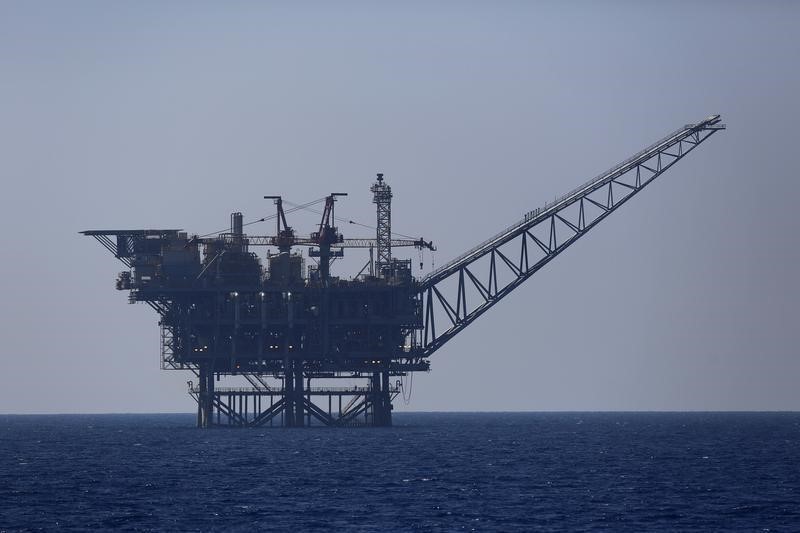(John Kemp is a Reuters market analyst. The views expressed are his own)
* Chartbook: http://tmsnrt.rs/2kwUN5L
By John Kemp
LONDON, Feb 17 (Reuters) - Warm weather has masked how much the underlying supply and demand picture for U.S. natural gas has tightened this winter thanks to lower production and strong exports.
The winter heating season of 2016/17 has so far been even milder than that of 2015/16, which was itself the warmest winter on record.
Since the start of the current season on July 1, 2016, according to the National Oceanic and Atmospheric Administration, there have been 2,454 population-weighted heating degree days - a measure of how cold the temperature was on a given day or over a period of days.
Heating demand is running 3 percent below last year, when there were 2,541 population-weighted heating degree days at this point, and 17 percent below the long-term average of 2,960.
With the exception of two short cold spells in early/mid-December and early January, the weather has been mostly warmer than normal since September.
The unusual run of mild weather has confounded forecasters, who mostly predicted this winter would be somewhat colder than the record warm winter of 2015/16.
But if temperatures have matched 2015/16, the development of the gas market could not have been more different.
Working gas stocks in underground storage have fallen much more rapidly, eliminating the big surplus left at the end of winter 2015/16.
Stocks are now 303 billion cubic feet below the level at the same point in the last heating season, having started the season 538 billion cubic feet above the previous year.
Gas stockpiles are falling week by week much more rapidly than in 2015/16 for any given level of heating demand.
Stocks are now 11 percent below the corresponding point in 2016 and just 4 percent above the five-year seasonal average.
SUPPLY AND EXPORTS
The context for the rebalancing of the gas market has been a decline in production since March 2016 after two years of strong growth in 2014 and 2015.
U.S. gas production has continued to trend lower despite a modest recovery in the rig count since the end of August 2016.
Marketed dry gas production was down by 68 billion cubic feet (3 percent) in November 2016 compared with November 2015.
In the early stages, rebalancing was aided by much stronger-than-normal consumption by power producers during the long heatwave in summer 2016.
Power producers' consumption between July and September 2016 was 243 billion cubic feet (8 percent) higher than in the same period a year earlier.
But generators' gas use has since moderated as the heatwave has turned into a mild winter and higher gas prices have encouraged a small but significant shift back towards coal.
Power producers cut their consumption by 116 billion cubic feet in October-November 2016 compared with the same period in 2015.
Since October, the rebalancing of the market has continued, but driven by a surge in exports that has whittled down stocks further.
Exports hit a record 226 billion cubic feet in November 2016, an increase of 70 billion cubic feet (45 percent) compared with a year earlier.
The United States almost became a net exporter in November, when exports fell short of imports by less than 5 billion cubic feet.
Exports remained exceptionally strong through December and January, according to weekly data on tanker loadings.
MARKET OUTLOOK 2017
The gas market is now roughly two-thirds through the winter heating season (two-thirds of population-weighted heating degree days occur between July 1 and Feb. 13 on average).
The short-term outlook is for warm weather to persist through the rest of February, which has depressed the price of gas for delivery in March and April.
But the market looks likely to tighten later in the year, and prices for gas delivered in July and August have proved steadier.
Underlying demand is increasing as more power plants utilising highly efficient combined-cycle gas turbines are commissioned.
"The electric industry is planning to increase natural gas-fired generating capacity by 11.2 gigawatts (GW) in 2017 and 25.4 GW in 2018," according to the U.S. Energy Information Administration.
"If these plants come online as planned, annual net additions in natural gas capacity would be at their highest levels since 2005." ("Natural gas-fired generating capacity likely to increase over next two years", EIA, Jan. 30)
Production should start rising again as a result of the increase in oil and gas rig counts since the middle of 2016.
And the summer of 2017 may or may not be as hot as the prolonged heatwave that characterised the summer of 2016.
But the increasing underlying demand for gas from power producers should support prices at a relatively firm level.
The price for gas delivered at Henry Hub in August 2017 has fallen to around $3.20 per million British thermal units from a high of $3.62 at the end of 2016, but is still far above the level of $2.55 a year ago.
(Editing by Dale Hudson)
